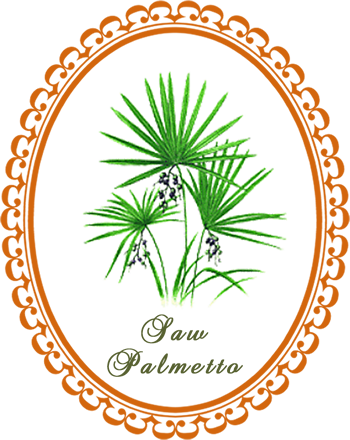
Saw Palmetto: has been generally seen to reduce prostate enlargement as well as improve the overall quality of life of those who suffer from the said conditions...
Common Names: Saw Palmetto, Sabal Palm, Palmetto Berry, American dwarf palm tree, Cabbage palm
Botanical name: Serenoa repens
Family: Arecaceae
Plant Type: Palm
Parts Used: Fruit
Flowering: April
Saw palmetto is native to the southeastern United States, from South Carolina to Florida and west to Texas. The plant grows in dense thickets in areas of well-drained, somewhat sandy soil, primarily along coastal plains.
Description: Saw palmetto is a low-growing, clump-forming palm with fan-shaped leaves that have thorny teeth along the stems. Tiny, sweet-smelling yellowish-white flowers grow in dense clusters and are followed by single-seeded, blue-black fruits.
Cultivation: Saw palmetto thrives in moist, well-draining soil and dappled shade. It is propagated by seed or by separation of suckers. Recently, use of native plant species for landscaping has become popular, and saw palmetto is one of the plants people are interested in using. However, landscapers have found it difficult to transplant this species from the wild and have it survive. Consequently, nurseries specializing in native species have begun to raise plants from seed to supply market demand. Saw palmetto is naturally drought- and insect-resistant. It requires no fertilizer and is a perfect plant for enviroscaping.
Harvesting: Most saw palmetto fruit is still wild-harvested. Fruits are harvested when ripe and dried for use in preparations.
Herbal Healing with Saw Palmetto
Medicinal Actions: antiseptic, diuretic, tonic
Medicinal Uses: Saw palmetto is a remedial tonic which builds and restores body tissue and stimulates the nutrition of the nerve centers upon and through which it operates. It is used in convalescence or debility to restore weight and improve vitality. In the reproductive system it has useful applications for both men and women. For the male, saw palmetto works primarily upon the prostate gland, which it keeps in the state of wellness. For an enlarged prostate gland and accompanied diminished sexual drive, it reduces the size of the gland and relieves other disorders that commonly occur with this condition (eg. dribbling urine, slow initiation or urination, incomplete bladder evacuation). In females, saw palmetto is thought to have an estrogenic action and is beneficial for treating ovarian enlargement, weakened sexual drive, and with continual use, can help develop small underdeveloped mammary glands. As a urinary tract tonic it is used where there is weakness in the neck of the bladder, and also as a diuretic to improve urinary flow.
Cautions:
Side effects from taking the herb may include stomach upset, nausea, vomiting, halitosis, constipation and diarrhea. A small number reported ulcers, jaundice or liver damage, but it is not clear whether it was this herb that was directly responsible. As always, use with caution.
If you have health problems that involve the digestive tract, the liver, heart or lungs, use caution when using this herb. Also exercise caution if you take blood thinning medications, are having surgery or dental work or if you have bleeding disorders. Some men report problems with erections, breast tenderness, testicular sensitivities and a change in sexual desire.
If you take hormonal medications, do not use. Theoretically, prostate specific antigen (PSA) levels may be lowered by this herb, which may delay a prostate cancer diagnosis. Because of hormonal reactions, this herb is not recommended to women who are pregnant or nursing.
Saw palmetto may interact with estrogen and prevent proper iron absorption. It may also interact with anticoagulants, anti-platelet drugs and anti-inflammatory medications. This herb should not be taken with medications that affect the levels of male hormones. It may also interfere with birth control pills or hormone replacement therapy.
Preparation and Dosage:
The herb is commercially available as an extract, as tablets, capsules and as an herbal tea.
Herb Extract: To treat an enlarged prostate, a daily dose of 320 mg is taken in either a single dose or divided into two. Some studies suggest 160 mg once a day may be just as effective.
The infusion may be taken 100 ml (4 fl oz) twice daily.
The tincture may be taken 2 ml (40 drops), three times a day.
If you appreciate the information provided,
please help keep this website running. Blessings!
© 2008-2025 aromaworx.ca. All rights reserved.

